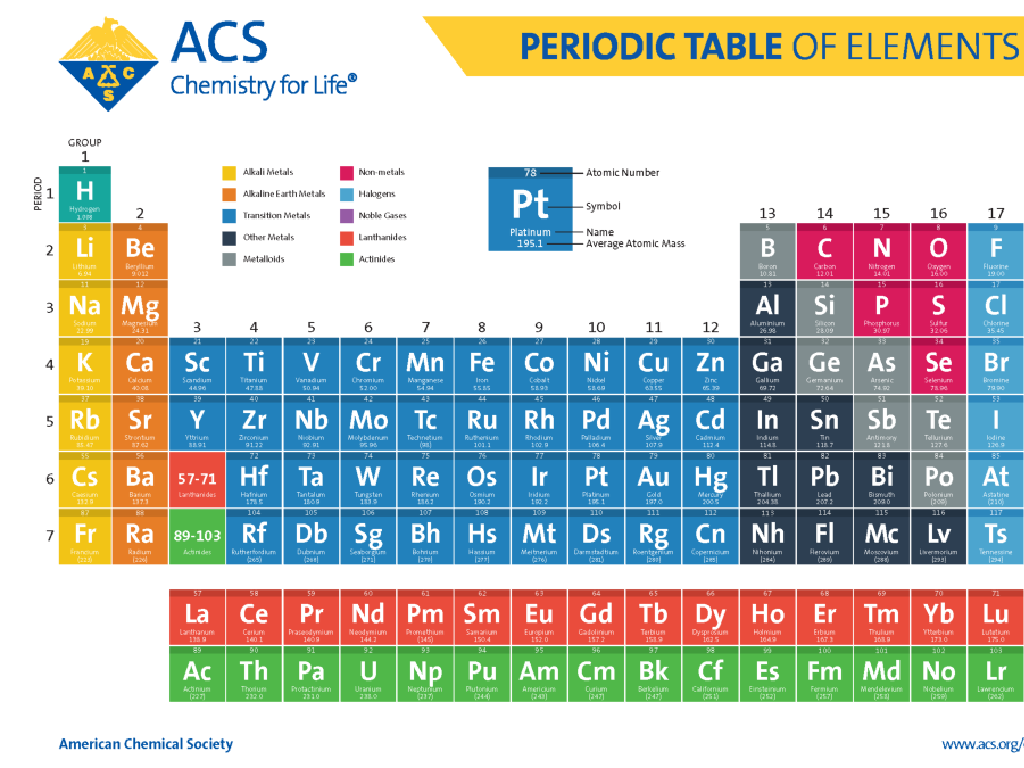Introduction To Electrical Engineering
Subject: Science
Grade: High school
Topic: Electrical Engineering
Please LOG IN to download the presentation. Access is available to registered users only.
View More Content
Welcome to Electrical Engineering
– Explore Electrical Engineering
– A field focused on electricity, electronics, and electromagnetism applications.
– Role of Electrical Engineers
– Design, develop, test, and supervise electrical equipment.
– Scope of Electrical Engineering
– From power generation to microprocessors, they shape our world.
– Today’s Lesson Overview
– We’ll cover the basics and look at some real-world applications.
|
This slide introduces students to the exciting field of electrical engineering, which encompasses the study and application of electricity, electronics, and electromagnetism. Electrical engineers play a crucial role in designing and managing a wide range of electrical systems and devices, from small-scale electronics to large power networks. Today’s lesson will provide an overview of the field, discuss the impact of electrical engineers on technology and society, and preview the topics we will explore in this unit. Encourage students to think about how electrical engineering affects their daily lives and the technological advancements it has enabled.
Introduction to Electrical Engineering
– Define Electrical Engineering
– The study and application of electricity, electronics, and electromagnetism.
– Its role in modern tech
– EE is crucial for developing computers, mobiles, and medical devices.
– Explore fields within EE
– EE encompasses several specialized fields each with its own focus.
– Electronics, power, telecom
– Examples: designing circuits, managing power grids, enhancing communication networks.
|
Electrical Engineering (EE) is a diverse field of science concerned with the study, design, and application of equipment, devices, and systems which use electricity, electronics, and electromagnetism. It plays a pivotal role in the continuous development of new technologies that form the backbone of modern life, such as computers, smartphones, and medical diagnostic equipment. Within EE, there are various specialized fields such as electronics, which focuses on circuits and devices; power systems, which deal with the generation and distribution of electricity; and telecommunications, which improves the way we communicate over distances. Encourage students to think about how electrical engineering impacts their daily lives and to consider the wide range of career opportunities in this field.
History of Electrical Engineering
– Key milestones in the field
– From the telegraph to the microchip, each innovation has paved the way for the next.
– Notable inventors and contributions
– Think of Edison’s light bulb, Tesla’s work with AC, and Bell’s telephone.
– Historical impact on modern engineering
– Past advancements have set the foundation for today’s electrical innovations.
– Evolution of electrical technology
|
This slide aims to provide students with an understanding of the historical context of electrical engineering. Discuss key milestones such as the invention of the telegraph, the light bulb, and the telephone, and how these have contributed to the development of modern technology. Highlight the work of prominent inventors like Thomas Edison, Nikola Tesla, and Alexander Graham Bell. Explain how their contributions have been crucial in shaping the field of electrical engineering as we know it today. Encourage students to think about how historical advancements have influenced current technologies and the importance of innovation in driving the field forward.
Basic Electrical Components
– Resistors: Control current flow
– Resistors limit the amount of current, like a valve for water flow.
– Capacitors: Store electrical energy
– Capacitors act like batteries, storing and releasing energy.
– Inductors: Manage changes in current
– Inductors oppose sudden changes in current, similar to a car’s shock absorbers.
– Diodes: Allow current in one direction
– Diodes act as one-way streets, only letting electricity flow one way.
|
This slide introduces the fundamental components of electrical circuits, which are essential for high school students beginning to learn about electrical engineering. Resistors are used to control the flow of electrical current in a circuit, much like a valve controls water flow in a pipe. Capacitors store electrical energy for later use, functioning similarly to a rechargeable battery. Inductors help to manage changes in current, preventing sudden spikes or drops. Diodes are crucial for directing current in a single direction, ensuring that electrical circuits function correctly. Examples of everyday devices include resistors in dimmer switches, capacitors in camera flashes, inductors in power supplies, and diodes in solar panels. Understanding these components is foundational for students’ further exploration of complex electronic devices and systems.
Ohm’s Law: The Foundation of Electrical Engineering
– Ohm’s Law formula: V = IR
– Voltage (V) equals Current (I) times Resistance (R).
– Interplay of V, I, and R
– Voltage is the push of electric charge; current is the flow; resistance is the opposition.
– Practical Ohm’s Law applications
– Examples: Light bulbs’ brightness, adjusting volume on speakers.
– Calculating electrical values
– Use Ohm’s Law to find missing values when two are known.
|
Ohm’s Law is a fundamental principle in electrical engineering that describes the relationship between voltage, current, and resistance in an electrical circuit. It’s crucial for students to understand that voltage is the force that pushes the electric charge through a circuit, current is the rate at which charge is flowing, and resistance is the material’s tendency to resist the flow of charge. Provide practical examples such as how the brightness of a light bulb changes with varying resistance or how the volume control on speakers works. Encourage students to practice calculating different electrical values using Ohm’s Law, which will help them understand how these concepts are applied in real-world scenarios.
Series and Parallel Circuits
– Contrast series vs parallel circuits
– Series: components in a single path; Parallel: components on separate paths
– Component behavior in circuits
– In series, current is constant; in parallel, voltage is constant across components
– Real-world applications
– Series: holiday lights; Parallel: home wiring
|
This slide introduces students to the fundamental concepts of series and parallel circuits, which are essential building blocks in electrical engineering. In a series circuit, components are connected end-to-end, so the same current flows through each component. In contrast, a parallel circuit has components connected across common points, providing multiple paths for current flow, and maintaining the same voltage across all components. Understanding how components behave in these circuits is crucial for designing electrical systems. Real-life applications include the use of series circuits in holiday lights, where if one bulb fails, the entire string goes out, and parallel circuits in household wiring, where each appliance receives the same voltage and can operate independently.
Circuit Diagrams and Schematics
– Reading circuit diagrams
– Learn to interpret the flow and components of electrical circuits.
– Symbols in schematics
– Each symbol represents a different component like resistors, capacitors.
– Creating simple circuits
– Steps to draw a basic circuit with a power source, resistor, and LED.
– Example circuit diagram
|
This slide introduces students to the basics of reading and creating circuit diagrams, which are visual representations of electrical circuits. Emphasize the importance of understanding the standard symbols used in schematics, such as those for resistors, capacitors, and power sources. Walk through the process of creating a simple circuit diagram, using a basic example that includes a power source, a resistor, and an LED. This will help students grasp how components are connected in a circuit. Encourage students to practice by drawing their own diagrams and identifying components in various electronic devices.
Introduction to Digital Electronics
– Analog vs. Digital Electronics
– Analog signals vary, while digital signals have discrete values.
– Understanding Binary Numbers
– Binary numbers form the basis of digital systems, using 0s and 1s.
– Logic Gates Explained
– Logic gates are the building blocks of digital circuits, processing binary inputs to produce a binary output.
– Microprocessors & Microcontrollers
– They are the brains in digital devices, executing instructions.
|
This slide introduces the fundamental concepts of digital electronics, which is a branch of electronics dealing with digital signals, as opposed to the continuously varying analog signals. Students should understand that digital electronics use binary numbers (0s and 1s) to represent information, which is processed by logic gates. These gates are the basic components of digital circuits, performing simple logical functions. Microprocessors and microcontrollers are integrated circuits that use these principles to perform complex tasks and are central to the operation of computers, smartphones, and other digital devices. Encourage students to think of examples of digital devices they use daily and consider what tasks these devices perform that might involve binary numbers and logic gates.
Electrical Safety in Engineering
– Understanding electrical safety
– It’s crucial to prevent accidents and ensure a safe working environment.
– Recognizing common hazards
– Hazards include exposed wires, wet conditions, and overloaded circuits.
– Utilizing safety equipment
– Safety gear includes gloves, goggles, and insulated tools.
– Following safety procedures
– Procedures like proper grounding and circuit testing protect against shocks.
|
This slide aims to emphasize the importance of safety when working with electrical systems. Electrical safety is paramount to prevent accidents, injuries, and fatalities. Students should be aware of common hazards such as exposed wires, damp or wet conditions, and overloaded power outlets. It’s also important to discuss the use of personal protective equipment (PPE) like insulated gloves and goggles, as well as the importance of using tools that are rated for electrical work. Safety procedures, including proper grounding of electrical systems and regular testing of circuits before beginning work, are essential practices that must be followed to maintain a safe working environment. Encourage students to always respect electricity and to follow best practices for safety.
Class Activity: Building a Simple LED Circuit
– Gather materials for LED circuit
– Construct the circuit on a breadboard
– Insert LED, resistor, wires, and connect to power
– Observe electricity flow in action
– Watch the LED light up, showing current flow
– Relate activity to electrical principles
– Discuss Ohm’s Law and circuit design relevance
|
This hands-on activity is designed to solidify the students’ understanding of electrical circuits by constructing a simple LED circuit on a breadboard. Provide students with a breadboard, LED, resistor, connecting wires, and a power source. Guide them through the process of connecting these components to form a complete circuit. Once the circuit is powered, the LED should light up, demonstrating the flow of electricity. Use this opportunity to discuss how the circuit relates to electrical engineering principles such as Ohm’s Law and circuit design. Encourage students to reflect on the role of each component and how altering the circuit can affect the LED’s brightness. Possible variations of the activity could include changing the resistor value, using multiple LEDs, or incorporating a switch.






